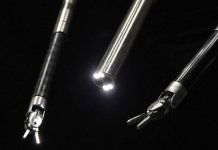
Researchers at ETH Zurich have made a significant breakthrough in understanding cloud server security.
They discovered vulnerabilities in the hardware used by AMD and Intel chips that could impact the security of public cloud services.
This finding could lead to more secure and efficient hearing devices for everything from smartphones to hearing aids.
Traditionally, a model from the 1940s has guided how technologies determine where sounds originate based on the timing differences as sound reaches each ear.
This model assumed dedicated neural detectors in the brain were responsible for pinpointing sound locations. However, the recent study published in Current Biology suggests otherwise.
David McAlpine, a distinguished professor at Macquarie University, and his colleagues found that humans use a broader, more energy-efficient neural network for sound location, similar to simpler mammals like gerbils and guinea pigs.
This research indicates that our brains do not have unique, advanced mechanisms compared to other animals for this function.
The implications of this research are vast, particularly for the design of hearing devices and digital assistants.
These findings highlight the potential for simpler, more effective technological solutions to the “cocktail party problem” — the challenge of focusing on a single sound source in noisy environments.
This problem is a major hurdle for individuals using hearing aids and for digital assistants that need to isolate voice commands.
McAlpine suggests that current technologies, which rely on large, complex language models to process sound, might be overly complicated.
He proposes that a simpler, more direct approach, inspired by how animals process sounds, could be more effective.
This would involve using basic sound snippets to identify and locate sound sources, a method that doesn’t require the reconstruction of complete audio signals but instead focuses on early neural processing of sounds.
The research team plans to further explore how minimal sound information can be used to enhance spatial listening abilities in devices.
This could lead to significant advancements in audio technology, making devices like hearing aids more adaptable and efficient in noisy environments.



